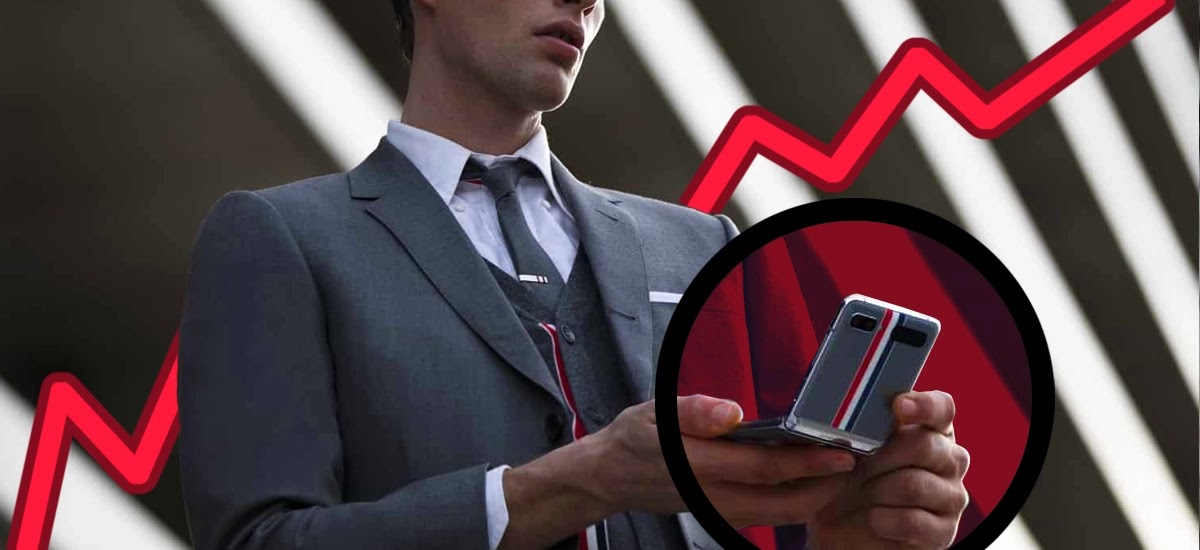Samsung & Apple have the Most expensive smartphones in the world. Have smartphones always been this expensive?
The biggest criticism nowadays is that smartphones have become too expensive, and Apple and Samsung in particular, have increased their prices considerably. However, people are still buying expensive smartphones, despite often being more money than premium tablets and laptops. At university, I remember meeting many students who had the latest iPhone but typed their notes on a considerably older laptop. One international student I can remember distinctly coming into the lecture theatre with the new iPhone 12 and a plastic bottom-of-the-barrel HP laptop. The processing power of the phone exceeded the power of the laptop!
Status Symbol
Which just shows the level of status that phones represent. People couldn't care less about the newest ThinkPad T15g Gen 2 15 or Samsung Galaxy Book Flex2 Alpha but the newest iPhone 13 and Galaxy Z Flip 3? God yeah. They're luxury goods that are the highest priced products in their category. Something worth its weight in gold, that represents the modern technological revolution, and that fits in your pocket. What more could you want? I distinctly remember a mate commenting that some guy in our class must be rich because they were wearing Air pods, which is ridiculous. However, it is this attitude of viewing mobile devices as status symbols that allows manufacturers to drive up the price of their goods. Why? Luxury goods don't follow the normal forces of demand and supply, when the price of a luxury good increases (e.g. the newest Gucci runners or the iPhone 13), it makes it more exclusive and thus more desirable.How Much Can You Afford?
“We expect prepaid sales of Samsung [budget] A-Series devices – especially the A01, A11, and A22 – to increase, taking share away from Samsung’s premium segment,”
Eating the Poisonous Apple
On the flip-side we have Apple. You might be somewhat perplexed by the graph, let me explain. Apple increased the price with the iPhone 3G and iPhone 4S, the former was done likely because of the breakout success of the iPhone 2G which allowed Apple to raise the price to position the product as a premium alternative to the Palms and Nokias on the market. The iPhone 4S on the other hand was constructed with more premium materials and so a price increase was warranted. However, between 2011 to 2017, Apple maintained the $649 entry price of the iPhone despite inflation eating into profit margins. However, this nobility stopped there when Apple decided to inflate the iPhone's costs to astronomical levels.
Why? Apple sells older versions of their phones. Right now you can buy the iPhone 11 (2020), iPhone 12 (2021) and iPhone 13 (2022) on their website. Whilst Apple does reduce the price of these devices, it must retain a consistant level of profit AND a distinct price differentiation between the devices so that someone does not simply buy the iPhone 13 and call it a day. However, unlike Samsung, who can release a plastic budget variant of its S-series, based on Apple's model, its budget variant must always be its two previous iPhone releases. This is a ridiculous practice, as the iPhone 12 released last year can hardly be regarded as a mid-tier device, considering that its 'premium' variant, iPhone 13, has a slightly better camera, chip and battery — and is basically the same phone in every conceivable way. However, Apple cannot reduce the price of the iPhone 11 or 12 to compete with the cheapest Galaxy S22, without replacing the aluminium with plastic or slicing into profit. Instead, Apple has increased the price of its latest model to accomodate and rolled out a slew of budget phones like the iPhone SE.










Write a comment
Post a Comment